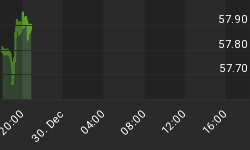Last week we noted that market breadth is topping out, and the next cyclical downswing of this indicator should exert more pressure on the market. We also pointed out that once the SPX breaks below the September - October lows, support will likely come in at the 1400 - 1407 level, which is the next confluence zone as defined by Fibonacci, Gann and Hurst methods.
The chart below shows that after the breakdown on Tuesday, the the SPX lows were confined in the 1400 - 1407 range:

The market breadth cycle continues to follow closely the dominant fixed cycle and the next upswing is expected to stem the decline in stocks. We also acontinue to monitor the similarities with the April-May consolidation and subsequent decline, and keep an eye on the Election year cycle.
For a change of pace, however, we'll include a Dow based forecast this week. Since 2012 is drawing to a close, there is plenty of data allowing to perform a meaningful correlation analysis with previous years. We'll go back to 1886 to be exact. And this is what we get:

The correlation coefficient is shown in % format, and years with the highest correlation to the Target year (in this case 2012) have green background.
Two things stand out. The crystal clear view of which years from 120+ years of Dow history are a close match to 2012. And, how fast and easy it is to perform such a time consuming analysis. All you need to do is to type in the Target year, and the DJIA History add-on to the OT Seasonal app does the rest.
In addition, you can chart up to 20 years along with the Target year, as well as an average of the years you're comparing the Target year to. In the case of 2012, this is the result, showing the average and the 2012 only:

Averaging blindly that many years from different market stages and cycles may not be the best and most practical approach to preparing a forecast, but it highlights the capabilities of the app. Once the DJIA History add-on to OT Seasonal becomes available in iTunes (very shortly, we hope), users will be able to experiment with countless other combinations.
















